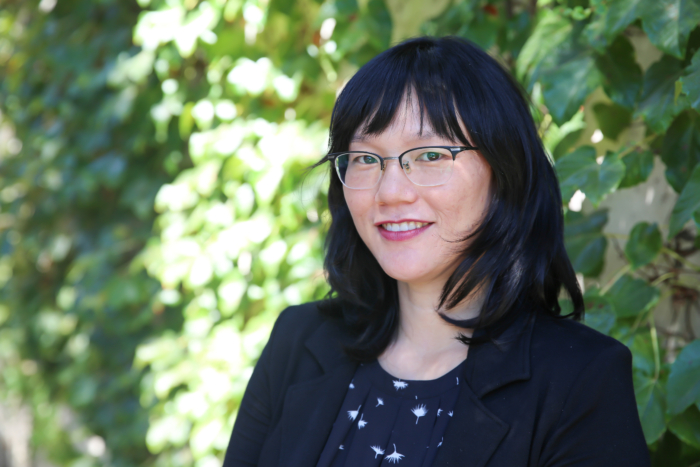
This fall, 11 new tenure-track faculty members joined Scripps College, including two at the W.M. Keck Science Department. As part of our ongoing series on Scripps’ faculty, the Office of Marketing and Communications recently sat down with Wendy Cheng, who joins the College as assistant professor of American studies, and serves as Co-chair for American studies at Scripps.
Cheng received her AB from Harvard University in English and American language and literature, her MA in geography from UC Berkeley, and her PhD in American studies and ethnicity from the University of Southern California. Her research focuses on race and ethnicity, comparative racialization, critical geography, urban and suburban studies, and diaspora. Her book, The Changs Next Door to the DÃazes: Remapping Race in Suburban California, develops a theory of regional racial formation through the experiences and perspectives of residents of majority non-white, multiracial suburbs, and won the 2014 Book Award from the American Sociological Association’s Section on Asia and Asian America. Her coauthored book, A People’s Guide to Los Angeles, for which she was also the photographer, is a guide to sites of alternative histories and struggles over power in Los Angeles County. Her current research focuses on the political activism of Taiwanese student migrants to the U.S.
Scripps College: Your work at the intersection of geography and American and ethnic studies has produced some fascinating books about the city of Los Angeles by revealing often-verlooked stories of people and their relationships to their environments. Let’s start with the popular book you co-authored with Laura Pulido and Laura Barraclough, A People’s Guide to Los Angeles, published in 2012, that introduces more than 115 sites of interest for the progressive-minded to visit while exploring Los Angeles. What can you tell us about that project?
Wendy Cheng: A People’s Guide is a popular education project that highlights struggles over power and alternative and marginalized histories all over Los Angeles County. I began collaborating on this project when I was a graduate student. The book is about the real history and present of L.A. seen through the lens of not just the elite, but everyone who built Los Angeles and made the city into what it is today. Among other areas, the book adds the histories and people of the Eastside and South L.A. to the map, because what is mostly celebrated when people tour or visit the city are the white- and elite-dominated downtown and Westside, which get more attention from mainstream travel guides and promotional interest.
SC: Maps themselves don’t always provide a way to view personalized cartography; much inspiring or revealing narrative can be lost. And yet, the idea of using maps to help us see what’s important can affect the way people—students, in this case—see the world. How will you help students explore “critical geography” in your courses at Scripps?
WC: I’m excited about a Core III class I’ll be teaching, Radical Cartographies, which provides students with an interdisciplinary challenge to self-design a map as their course project as they explore the nature of cities, their power structures and inequities, and more. This course questions common understandings of geographies of the present by deconstructing maps, developing a critical understanding of cartography, and ultimately constructing alternative cartographies. Students will become familiar with critical geography literature on mapping and “counter-mapping” as well as artistic, geographic, and activist approaches to radical cartographies.
SC: Your research has also led you on a bit of a personal journey to explore the geopolitics that led to the immigration of Taiwanese graduate students to the U.S. in the 1960s and 1970s. Your own parents were part of that generation who stayed in the U.S. in the flux of cold war dynamics, unable to return to their home country until martial law ended in 1987 because they were blacklisted for their political activism. Your mother still lives here, as do many Taiwanese Americans who fled the influence of the Kuomintang of China, also known as the Chinese Nationalist Party, at the time. Tell us about that research.
WC: I’ve begun interviewing Taiwanese migrants to the U.S. regarding their political activism, from both the historical perspective related to their migration and the dynamics that are still present in their lives. We are fundamentally political beings, no matter what our lives may look like “from the outside,” and I’m working to capture an accurate reflection of the complex relationship these populations have with their home and adopted countries, across a multitude of sensitive and sometimes difficult personal, social, and political topics. It is a daunting and invigorating—and ultimately personal—task for me as a scholar and as a daughter of political dissidents.

